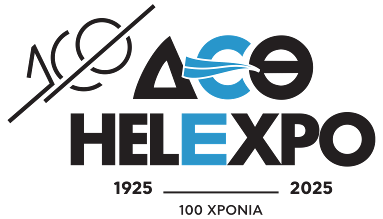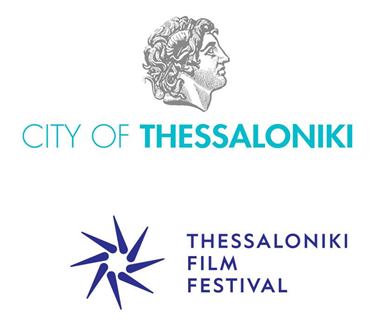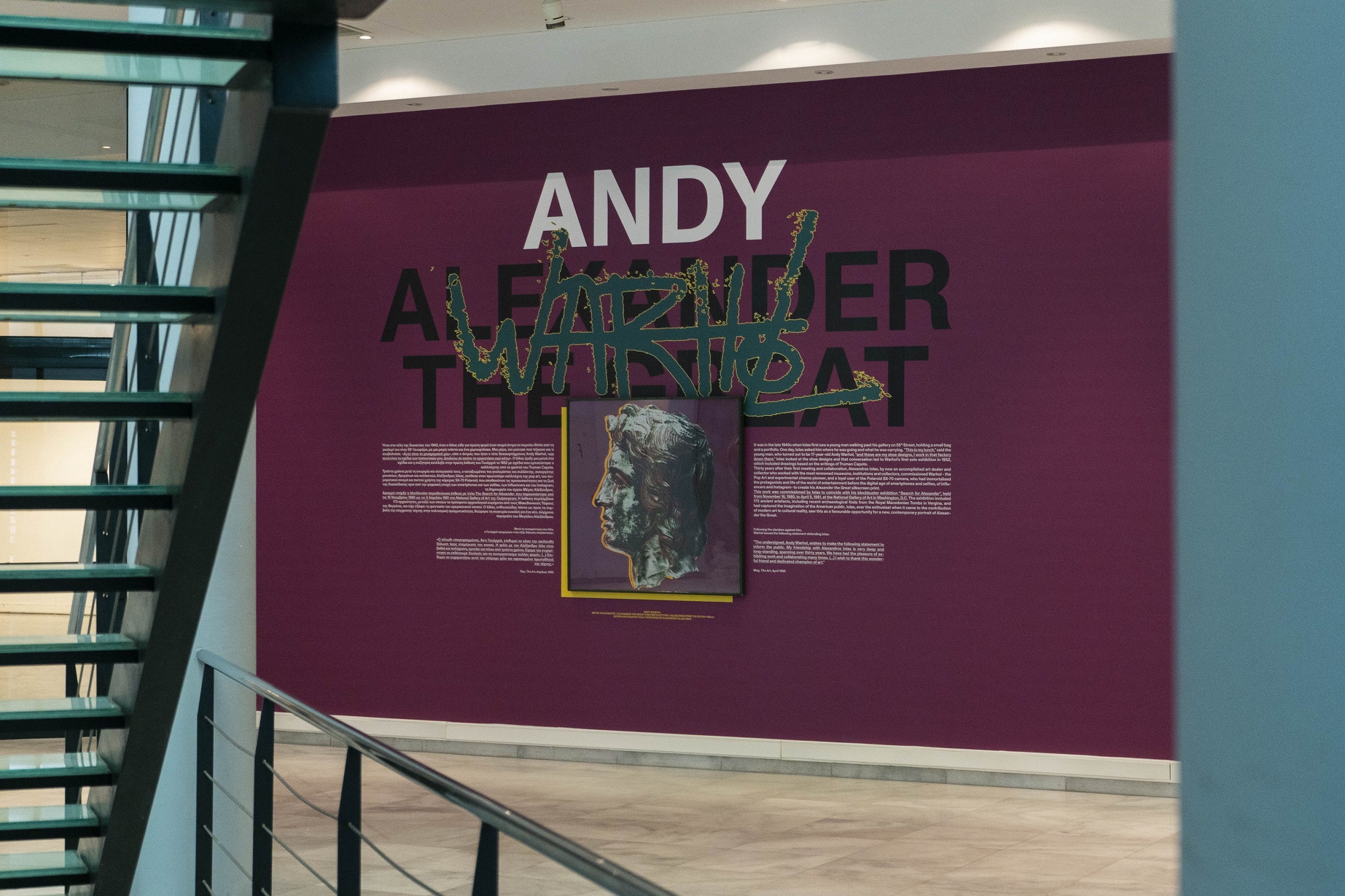everything must change | Radical Intelligence. Saloniki 9
October 31, 2025 - July 12, 2026Dates and places to remember:
Biennale 9 opening on October 31, 2025:
At MOMus-Experimental Center for the Arts, with the exhibition “Plot Twist (the science fiction change),” in collaboration of Biennale 9 with the Thessaloniki Film Festival (show will run until November 16, 2025, participants will be announced soon) and at Pavilions 2 & 3 (TIF-Helexpo) with a day of events and a party.
Biennale 9 in full manifestation from mid-May to mid-July 2026 (exact dates to be announced soon), at Pavilions 2 & 3 (TIF-Helexpo) and Kalochori Delta.
- Interim, unfolding Biennale events and spaces to be announced. Stay tuned!
The Thessaloniki Biennale of Contemporary Art is co-financed by the European Union (NSFR - “Central Macedonia” Operational Programme).
Μore: https://thessalonikibiennale.com/
the curatorial field
9th Thessaloniki Biennale of Contemporary Art
everything must change RIS9
The Thessaloniki Biennale of Contemporary Art, with its ninth edition, is embarking on a new approach to the institution, reconfiguring itself both spatially and conceptually. It explores the pervasive demand for an “otherwise” that appears to define life and art both locally and globally, while also delving into the perception, content, necessity, and significance of “change” in general–both in the present moment, but also in connection with key relevant moments of the past.
With its intriguingly ambiguous title, “everything must change. RIS9”, curated by the independent curator and art historian Nadja Argyropoulou, the 9th Thessaloniki Biennale of Contemporary Art aims to connect life and art in unexpected ways—through humour, ingenuity, and a spirit of joyful militancy that remains non-didactic yet alternatively pedagogical. The Biennale seeks to highlight works that critically engage with the present and help shape the future, all while actively envisioning a world of many worlds.
Biennale 9 opens on October 31, 2025, with the exhibition “Plot Twist (the science fiction change)” in collaboration of Biennale 9 with the Thessaloniki Film Festival with a day of events as hints of un-hierarchical unfolding leading up to its May – June – July 2026 main manifestations.
“everything must change. RIS9”
In exploring the proposition of “everything must change”, the exhibition confronts the excitement, awe, and even the fear caused by the urgent Now shaped by Artificial Intelligence. It attempts, however, a deeper and less banal approach to intelligence by looking into the revolutionary, multi-layered thinking that resides beyond the trite evocation of technological thauma – trauma binary. The “Radical Intelligence” referenced in the “RI” of the title is paired with “S9,” a shorthand evoking a popular, older alternative name of Thessaloniki (Saloniki), thereby inserting in the Biennale’s title a direction and an invocation. This dynamic movement, towards the city and broadcast from it, reflects an ambition to foster a sense of togetherness—however temporarily— with Thessaloniki’s spaces and symbols.
Biennale 9 features works by international artists, with a significant proportion of the exhibits comprising new digital and non-digital works commissioned specifically for this edition by MOMus in keeping with the curator’s rationale and overall plan. Diverse social, artistic, and scientific groups and individuals are participating, while the Biennale’s identity, venues, actions, communications, and collaborations are all designed to reflect and engage with the questions raised by its title and content.
Under this curatorial vision, the venues which have been selected to host the exhibition co-create a crucial symbolic liminal space:
Venues within the Thessaloniki International Fair–Helexpo, specifically Pavilions 2 & 3, and MOMus-Museum of Contemporary Art. These sites highlight the Fair’s historical significance and multifaceted function, particularly its ties to Greece’s economic model and broader socio-economic imaginaries and rituals. Moreover, the complex’s ongoing transition makes it currently a focal point for debates and competing visions for the city’s public space, touching on the very future of urban life in Thessaloniki.
The unique Kalochori Lagoon on Thessaloniki’s western outskirts. This is a landscape that has been shaped gradually by refugee communities, industrial growth, and the emergence of a wetland since the mid-1960s – a result of land subsidence, groundwater depletion, and the mixing of river and sea waters. Now part of the Axios Delta National Park, the lagoon is rich in rare biodiversity, hosting both old and new species, human and non-human activity, generating narratives that powerfully demonstrate the value of symbiotic living.
- MOMus-Experimental Center for the Arts (Warehouse B1, Pier A’, Port of Thessaloniki) will host the exhibition“Plot Twist (the science fiction change) and will feature works from this year’s Biennale that engage in dialogue with the central theme of the 66th edition of the Thessaloniki Film Festival – highlighting a curatorial collaboration between Biennale 9 and the Festival.
Nadja Argyropoulou, curator of the 9th Thessaloniki Biennale of Contemporary Art, notes:
“What are the things that “must change”? How, when, by whom, and with whom? Might the “sustainable dismantling” of institutions, practices, and rituals that confine and alienate us be just as vital as the sustainable growth of everything that heals and unites us? Why is it easier to envision the end of the world rather than imagine the emergence of a world of many worlds, the possibility of differentiation without separation, as invoked by poets and quantum physicists alike? What is the rebellious ground of response-ability, engagement, and witnessing that might give rise to genuine change? How does art participate in this change if not by powerfully drawing us towards the animating force of communal life?
Biennale 9 echoes a common(place) yet recurrent, urgent, and fragile, plural and widely co-opted demand / slogan. It simultaneously subjects this slogan to the rigours of critique or better stated, to the practice of attending to what is emerging, to the care of witnessing, interpretation, accountability to the precision required in order for a change fair for all to be imagined and realized.
Through its works and overall character the exhibition points at the ways that the same phrase can be wielded by social revolutionaries and techno-fascists alike, by persecuted activists and authoritarian demagogues, by rival social classes and diametrically opposed collective forms of expression. In other words, it asks: amidst a world that often feels suffocatingly predetermined, compliant, entrenched, un-free, possessed, how can we reclaim the right to wander into complexity, the right to refuse, the joy of resistance, the choice of life over mere survival? What is the radical intelligence that ever, persistently creates everyday routes of escape to the insurgent ground of love?
A central inspiration is the rather untranslatable concept of “waywardness”, articulated by theorist and writer Saidiya Hartman in Wayward Lives, Beautiful Experiments: Intimate Histories of Social Upheaval, where Hartman reconstructs the “terrible beauty” of oppressed and marginalized black lives in early 20th-century New York. As she writes, “A revolution in a minor key unfolded in the city and young black women were the vehicle”, while forms of solidarity and love emerged outside conventions and the law. [1]
As writer and academic Fred Moten remarks today, ‘We have to recognize that our struggle for liberation is given in the language of liberalism.’ How can a language, so brutally co-opted by genocidal, colonial capitalism, by an economy built on distraction and spectacle, remain vital and vibrant, active and transformative, accurate in its references and origins, yet not authoritarian and exclusionary? How can it still articulate the para—the alongside and beyond—that we inhabit and connect us with the alternative politics of pleasure, the mourning of loss, earlier and current struggles for social equality and justice, degrowth and environmentally engaged cosmopolitics, queer practices of care, Indigenous traditions and anti-colonial movements, eco-social alliances, and their solidarity-based agendas?
How might it empower the proverbial canary in the coal mine? How can it inspire (without manipulating) desire to Not settle for the proper and the proposed of thanatopolitics?
Through the visual frequency of the works displayed, the dialogues, the contradictions and entanglements, the exhibition is above all committed to explore kinships within the practice of thinking and highlight the possibility of radical change and emancipatory pluralism. It champions forms of collective action, vigilance and radical sympoietics that avoid the homogenizing silencing of contradictions and paradoxes, while emphasizing the realisation of free thought, the importance of small-scale stories of everyday disobedience, resistance, love, escape, and poetry that change the world from below and within.
Embracing “the aesthetics of bewilderment”, which fuses pleasure and questioning, frictions and fictions, clarity and blur, sensory participation and distancing – Saidiya Hartman’s notion of “critical fabulation”- the 9th Thessaloniki Biennale of Contemporary Art breathes an air alive with the possibility of undeterred assembly, unruly gathering, aesthetic sociality.”
MOMus is the organizing institution of the 9th Thessaloniki Biennale of Contemporary Art is co-organized with TIF-Helexpo in partnership with the Municipality of Thessaloniki and the Thessaloniki Film Festival.
Curator: Nadja Argyropoulou
Director: Yannis Bolis
Project Management: Eftyhia Petridou, Silia Fasianou
Visual Identity: studio precarity
Architectural Design: Y2K Architects
Curator’s Assistant: Evelyn Zempou
Organizer: MOMus-Metropolitan Organisation of Museums of Visual Arts of Thessaloniki
Implementation: MOMus-Museum of Contemporary Art
Co-organizer: TIF-Helexpo
Partners: Municipality of Thessaloniki, Thessaloniki Film Festival
Nadja Argyropoulou short Bio
Nadja Argyropoulou is an independent curator, art historian and writer based in Athens and working internationally. She is a researcher on ecocritical practices and networks, forms of de-growth, engagements of art with science, technology and alternative fields of knowledge and action. She has written texts on contemporary art in books, art catalogues and the press.She is a founding member of the artistic/research-scientific collective Saprofyta, of AICA (International Association of Art Critics) and of IKT (International Association of Curators of Contemporary Art).
---
[1]In Hartman’s own words: “The acts of the wayward — the wild thoughts, reckless dreams, interminable protests, spontaneous strikes, riotous behavior, nonparticipation, willfulness and bold-faced refusal — redistributed the balance of need and want and sought a line of escape from debt and duty in the attempt to create a path elsewhere”, Saidiya Hartman, Wayward Lives, Beautiful Experiments: Intimate Histories of Social Upheaval (New York: W. W. Norton & Company, 2019), p. 237

ORGANIZER

CO-ORGANIZER

CO-ORGANIZER

PARTNERS


